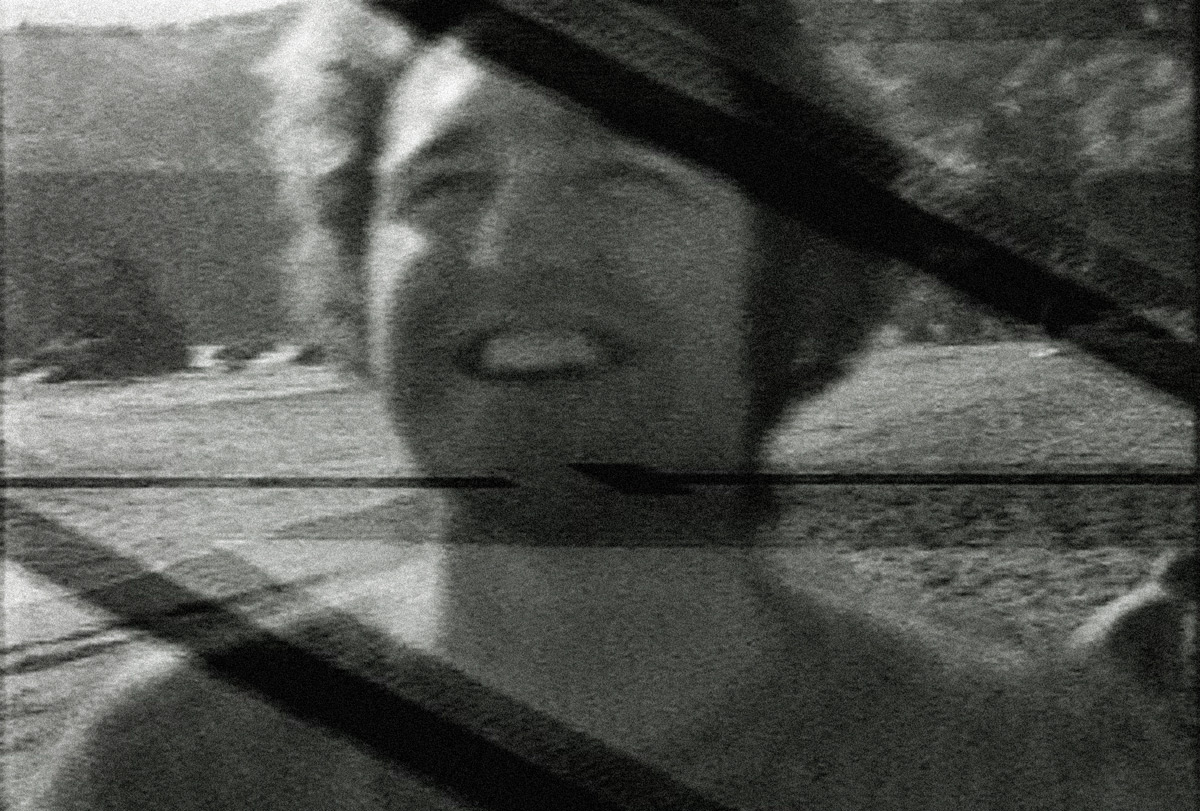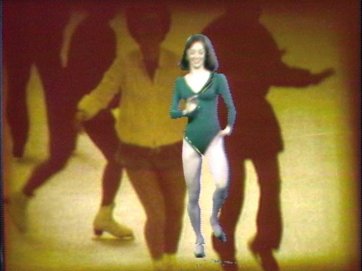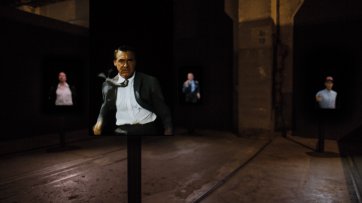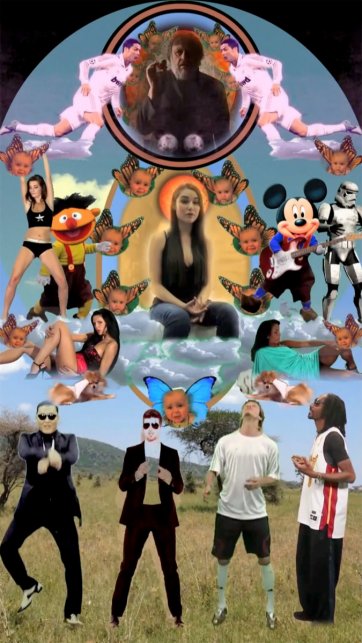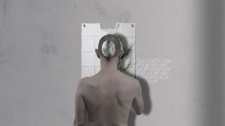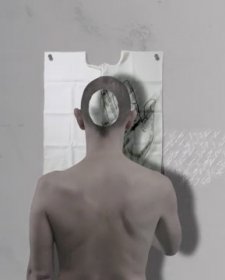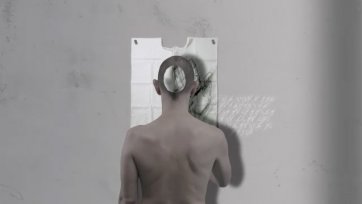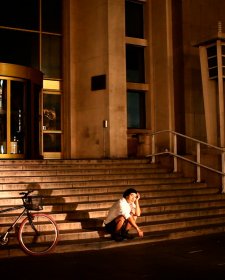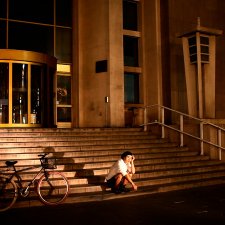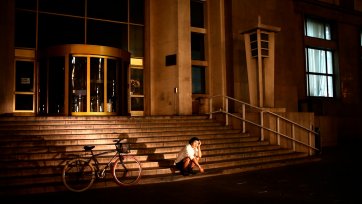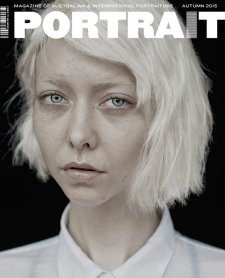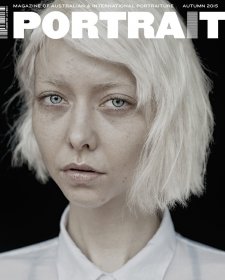We spend more time in front of a screen than we do sleeping. This is not surprising considering the average Australian household owns eight internet-connected devices (I alone own six). Digital screens and cameras pervade our day-to-day, CCTVs hide in ATMs, digital faces speak to us from billboards and we’re shooting, editing and sharing videos from our smartphones.
Using the ‘1 Second Everyday’ app on my iPhone, I have started recording and editing one second of video footage daily, which will become a year-long video portrait of my life. This is more than a ‘selfie’ – this is an off-the-shelf, self-directed bio-pic. I am just one in millions of consumers of video technology, actively constructing identity, becoming the star of my own show. I am also not alone in being slightly unsettled by this new world. What does this mean for artists today working in the half-century-old genre of video portraiture?
As soon as screen-based technology was available, artists were using it. By the mid-twentieth century, artists and activists participating in the Fluxus and Conceptual art movement, which included John Cage, Yoko Ono and Nam June Paik, were ready for a new means of making experiential art accessible to the masses. Television ignited what American critic Bruce Kurtz called ‘an obsession with the present tense’, attributing ‘Newness, intimacy, immediacy and involvement’ as key characteristics of the medium. Despite its powerful potential for artistic expression, television was expensive, bulky, and controlled by advertisers and multinational corporations. This all changed in 1965 when Korean-American artist, Nam June Paik, walked into a New York shopfront and purchased a Sony Portapak video recorder, fresh off the first shipment to the US. Paik pulled out the camera on his cab ride home and started filming scenes of the Pope’s procession from the car window. When this footage was shown at a café later that night, video art was born.
The first decade of video art saw many responses to the commercialism of television, particularly through mimicking mainstream media. American artist Frank Gillette, for example, was interested in shifting the power inherent in broadcast television back to the individual. His focus was to move from being a ‘passive’ recipient of commercialised media to creating the media in a new kind of ‘alternative television’. Gillette recalls turning on his video recorder in 1970 at the beach with his friends, passing the camera around ‘like a joint’, capturing their youthful musings, believing they could revolutionise the medium by putting it into the hands of the artists. For them, it was the intimate nature of the medium, the ability to get up close and personal, that interested them.
Pioneering video artists responded to the promulgation of pop culture through television and advertising. Nak June Paik’s and John Godfrey’s video portrait, Global Groove (1973) is an electronic collage of pop icons and excerpts from television and magazines, subverting the language of television and giving audiences a ‘glimpse of a video landscape of tomorrow’. Paik and Godfrey’s commentary on media-saturated society combined with Gillette’s notion of being an ‘active’ participant may seem amateurish by today’s standards, but these early works were the visionary precursors to what unfolded in subsequent decades for video art, and life. Globalisation, the Internet, and the almost daily release of new consumer digital technology have had a profound effect on video art. It has moved from single channel monitor displays to multi-channel, interactive installations. The Barbican Centre’s Digital Revolution exhibition in 2014, Geneva’s Centre of Contemporary Art’s Biennale of Moving Images (2014), and the National Portrait Gallery’s annual Macquarie Digital Portraiture Award (MDPA) explore and extend the potential of video portraiture in our expanding art world.
Building on the legacy of early video artists, emerging Australian artist Xanthe Dobbie’s video, The Assumption of Virginity (2013), a finalist in the MDPA 2014, comments on the contemporary creation of identity in this new media world. Dobbie replaces religious figures in Pietro Perugino’s sixteenth-century The Assumption of the Virgin and Four Saints with moving images of pop icons and internet sensations. Dobbie’s work reconsiders identity by casting-off outdated notions of female sexuality by showing ‘the Virgin’ rising above her male celebrity counterparts. Tiyan Baker, the winner of the MDPA 2014 , uses digital video’s watchful intimacy to explore selfhood in Lost Love – Waiting for midnight at the Long Distance Call Building on Chang-an Jie so I can call her, Beijing 1998 (2014).
An unsettling video portrait, recently exhibited at the 2014 Sydney Biennale by artist Daniel McKewen, Running Man (2008–14), focuses on a traditional subject of portraiture – the rich and famous. Five film stars perpetually run towards the viewer but never get caught by their pursuer and never get nearer to the viewer. McKewen’s interpretation of Hollywood masculinity asks ‘are these men running from their true self or a Hollywood construct?’ This postmodern use of the celebrity figure as a primary subject undermines settled notions of self and identity.
The ‘true self’ is closely interrogated in contemporary video portraits where the celebrity figure takes centre stage. In Australian Director Warwick Thornton’s video portrait, Paul Kelly (2013), Kelly is portrayed as the Greek mythological character, Atlas. A stoic Kelly stands upon a pedestal, slowly revolving, head down, with the weight of a vintage VOX amp awkwardly resting on his shoulders. The heavenly backdrop and mysterious song creates a sense of otherworldliness, and the pedestal reinforces the legendary status of the subject. Kelly’s staged pose is without movement, until the camera zooms in and his eyes briefly lift to connect with the viewer. This subtle yet powerful movement not only kindles the viewer’s interest, but opens a small window through which Kelly’s mind, or spirit, is momentarily revealed.
As we all – willingly or not – generate enough video content to be stars on our own channel, the practice of video portraiture becomes an increasingly fascinating and important field for creative response. The questions posed by video artists fifty years ago about the homogenisation of culture and the place of the individual in mass communication remain unresolved. The search for an ‘inner life’ or ‘true self’ is an ever shifting and ambiguous plight, as we continue to negotiate the possibility of multiple identities. This has emerged as an area of interest for contemporary artists working in the medium at least partly responsible for this upheaval. As the celebrity takes centre stage for this kind of video portraiture, we are enticed to look up from one screen to another and ask ourselves: are we not so different from the familiar faces staring back at us from the screen?
